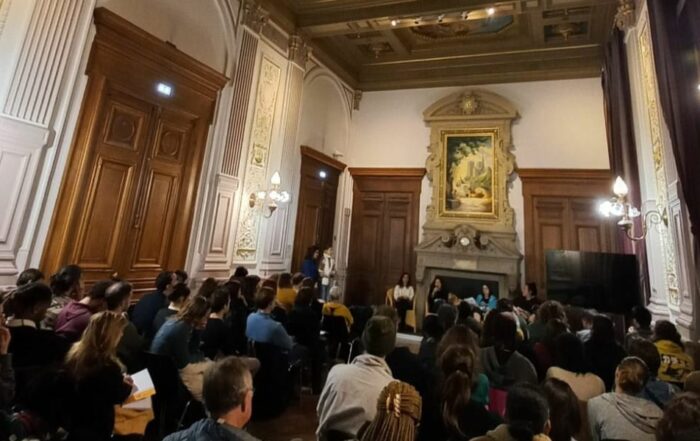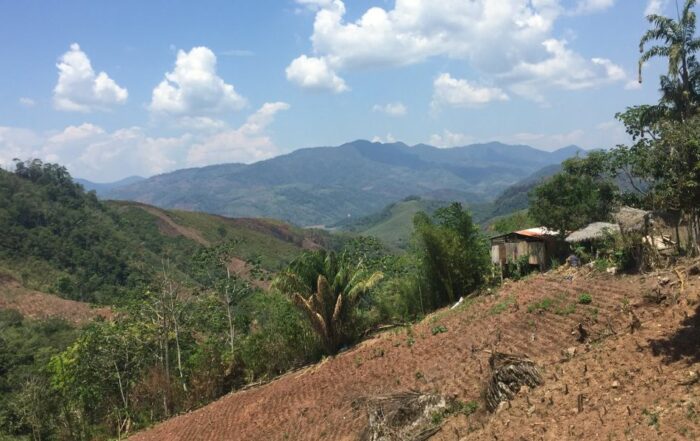A few weeks ago, the team formed by Conservación amazónica and Envol Vert conducted the first search for the presence of giant otters (Pteronua brasiliensis) in the area. Indirect signs such as footprints, burrows and feeding grounds were searched for in the main waterways (Romayna stream and peat bog) of the Yanayacu – Maquía Conservation Concession (CCYM).
The water level represents an alarming situation as it falling at a time when it should normally be rising. That is why the identification and georeferencing of these signs became difficult challenges.
A total of 31 evidences were counted that confirms the presence of this mammal inside the concession. Moreover, t the discovery of indirect signs of the presence of this species will make it possible in the future to create conservation plans for this species and increase vigilance in the area.
Indeed, Pteronua brasiliensis is a species on the red list of the International Union for Conservation of Nature (IUCN) and considered endangered!
The giant otter is a species that faces several anthropogenic threats, from the poisoning of the watercourses where they feed (mainly fish), as well as being hunted because they are entangled in fishing nets.
Join us in supporting the conservation of this species, now more than ever…. Nature needs us !
A few weeks ago, the team formed by Conservación amazónica and Envol Vert conducted the first search for the presence of giant otters (Pteronua brasiliensis) in the area. Indirect signs such as footprints, burrows and feeding grounds were searched for in the main waterways (Romayna stream and peat bog) of the Yanayacu – Maquía Conservation Concession (CCYM).
The water level represents an alarming situation as it falling at a time when it should normally be rising. That is why the identification and georeferencing of these signs became difficult challenges.
A total of 31 evidences were counted that confirms the presence of this mammal inside the concession. Moreover, t the discovery of indirect signs of the presence of this species will make it possible in the future to create conservation plans for this species and increase vigilance in the area.
Indeed, Pteronua brasiliensis is a species on the red list of the International Union for Conservation of Nature (IUCN) and considered endangered!
The giant otter is a species that faces several anthropogenic threats, from the poisoning of the watercourses where they feed (mainly fish), as well as being hunted because they are entangled in fishing nets.
Join us in supporting the conservation of this species, now more than ever…. Nature needs us !






